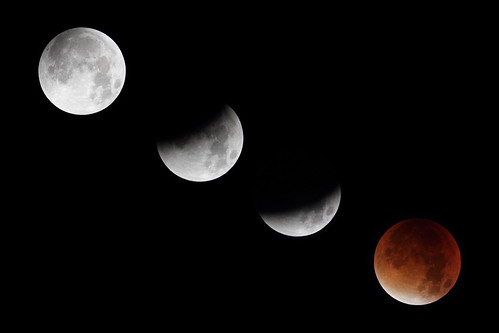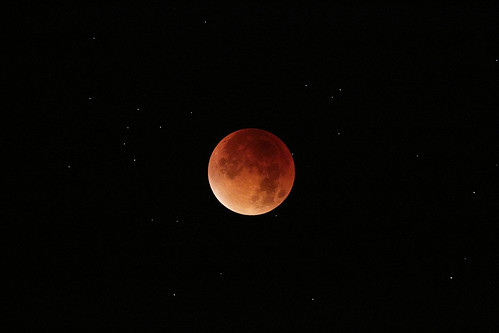Lunar eclipses aren't that rare - certainly not as rare as some uninformed sections of the media would have you believe, but I hadn't photographed one since March 2007, so I stayed up till stupid o'clock the other week to get some images of the so-called Super Blood Moon eclipse. The wind was a little gusty, but fortunately the clouds didn't interfere.
One thing the photos don't convey is just how much the moon dims during totality. (The reason it doesn't go completely dark is because it's illuminated by sunlight refracted through the earth's atmosphere. Or to put that in a slightly more lyrical way, an observer standing on the moon during an eclipse would see all of the earth's sunrises and sunsets compressed into a beautiful ring of light.) The first image in the sequence above (the barely eclipsed moon) was shot hand-held with a 1/1600 second exposure at ISO 800. The last shot (fully eclipsed) was taken on a tripod with a cable release, with the mirror lock-up function enabled; exposure time 1/2 second, ISO 1600. At long focal lengths (400 mm and above), these slow exposure times can be problematic. Shoot for anything longer than about half a second and the earth's rotation will start to smear the image.
So, as is often the case in astrophotography, there's a trade-off to be made. Do you under-expose and increase noise, or do you expose correctly and lose detail? A tracking mount which will correct for the earth's rotation is one way around the problem, but the good ones don't come cheap. Another method (if you find high ISO noise objectionable) is to shoot lots of under-exposed images one after the other, stack them in RegiStax or AviStack to increase the signal-to-noise ratio, and then push the exposure in Photoshop. I did think about doing this, but it was late and I was tired and it seemed like a lot of effort given that I still had several hundred photos from the Camargue to sort through (a post on that is coming soon).
Maybe it's something I'll try for the next eclipse in 2018; or maybe by then cameras will have progressed so much that high ISO noise won't be a big deal... Anyway, to tide us over till then, here's an uncropped view of the eclipse taken at ISO 6400, and carefully pushed in PS to bring out the background stars. A red full moon surrounded by stars; now that's a sight worth staying up for.



Love this, especially the Moon with the stellar backdrop - fantastic.
ReplyDeleteThanks Martin.
Delete